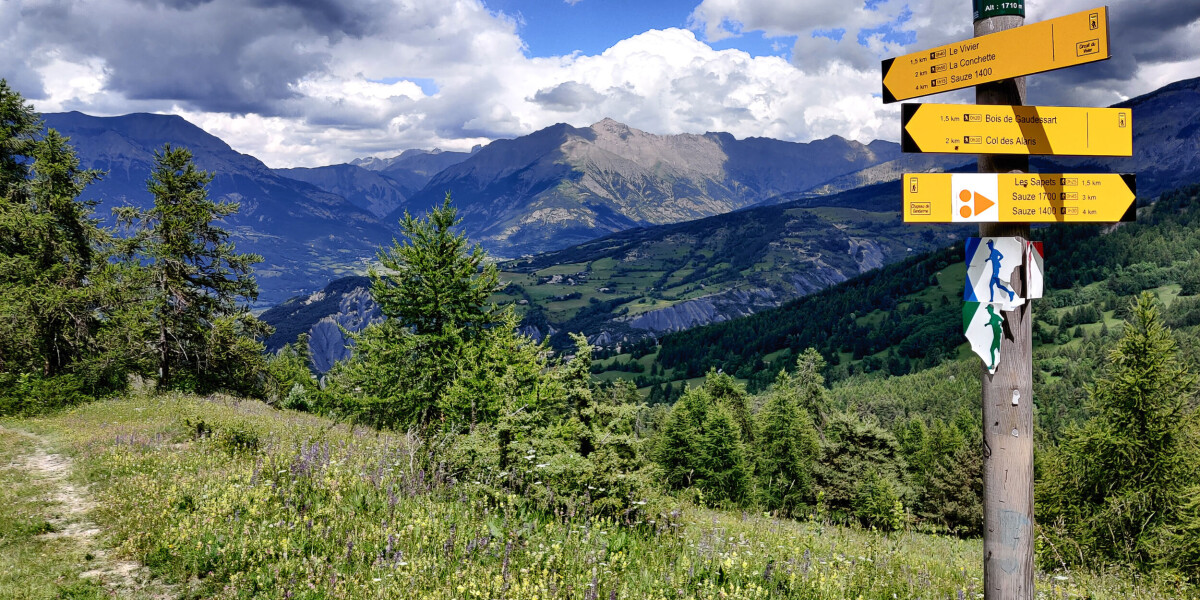
- Select a language for the TTS:
- UK English Female
- UK English Male
- US English Female
- US English Male
- Australian Female
- Australian Male
- Language selected: (auto detect) - EN
Play all audios:
Walking is one of France’s most popular pastimes and there is an incredible variety of terrain to explore. Whether you are a complete beginner or perhaps have walked before in other
countries, some practical advice will help you get ready to enjoy the French trails. Read more: Map: Top 10 French departments best for health in new 2025 ranking In terms of equipment, a
decent pair of well fitting shoes with good grip is all you need to get started, and you could later invest in some walking boots. It is best to try on different types and get properly
fitted in a shop. Smaller sports outlets can be excellent sources of advice, while larger ones such as Decathlon and Intersport have the advantage of a wide product range, including their
own brand kit. At first, a small rucksack to hold a drink and food, extra layer or waterproof jacket depending on the weather, whistle, mobile phone and paper or online map will be enough
for shorter walks. You may also like to try walking poles, which offer a bit of extra support and are helpful when you are out for longer. Considerable work is put into marking out walks
and providing information by FFRandonnée (the French Hiking Federation), local authorities and other organisations. Over 227,000km of marked paths have been created, ranging from short loops
to multi-day hikes across the country, each guiding you through an area’s landscape and heritage. It is worth noting that the footpath system here may be quite different to what you are
used to. In France, they are frequently shared with horse riders, cyclists and sometimes motocross and quad bikes, and go over both public and private land. In the latter case, permissive
access will have been granted so legally you can walk across it providing you follow the designated path. On the ground, private paths and land are often signed by propriété privée or
defense d’entrer (private property or no entry). Maps do not always show this information so sticking to the signposted walks is best until you know an area. You also need to be aware of
local hunts taking place. Hunt calendars, showing the dates of upcoming hunts are often available, and hunting information will be made available online through hunting federation websites.
Read more: Is there a way to check if a hunt is taking place near me in France? Hunters also need to put up signs informing people of an activity taking place. The shorter marked walking
and hiking routes in France are known as promenade et randonnée (PR). Each has a name or number so you are able to check the distance, terrain and approximate duration first then choose one
to suit you. From a set starting point, follow the waymarks and arrows – largely found on posts, trees and walls – around the route. Most of these walks are created by FFRandonnée and a
system of yellow markings is used to guide you along. Read more: What do the signs on French hiking paths mean? Dogs are generally welcome when walking but there may be specific local rules
that request they stay on leads. In many National Parks and certain areas where they could be a danger to animals and livestock, dogs are not permitted even on leads, the exception being
blind or assistant dogs. These places are usually well signposted but you can check online to make sure before you set off. In addition, note that rules for dog walkers in France changed
from April 15, making it illegal to have your dog off-lead away from designated paths and trails in woods and forests over the summer. The rule lasts until June 30 and is intended to protect
birds and small mammals during their nesting and reproductive seasons. Breaking this rule risks a fine of up to €750, as article R428-6 of the Code de l’environnement (environment code)
defines a dog not kept on a lead is considered to be “roaming”. For the rest of the year, the pet does not have to be on a lead but it must remain within a 100-metre radius of its owner at
all times nonetheless There are plenty of options for finding walks wherever you are based – maps, information and advice is generally available by asking at the mairie (town hall) or local
tourist information office. A lot of commune websites detail their local circuits and once you start noticing the yellow markings you will begin to see them everywhere! The departmental and
main tourist area websites in France also have searchable lists and maps highlighting their balades (walks) and randonées (hikes). Useful walking information in English can be found on the
FFRandonnée website as well as a database of routes. Other excellent sites are Visorando and IGNRando. Walking apps are a valuable resource and not only show thousands of routes in France
but often have a navigation feature enabling you to see exactly where you are on the map as you walk. You will generally need a data connection to see the maps but many apps have a premium,
paid-for option that lets you download maps for offline use. Some apps will record your track while you walk and let you upload photos and notes afterwards to create a digital scrapbook of
all the places you have visited. Try these ones to get started: * MaRando - FFRandonnée’s official app with route ideas, navigation and pdf route downloads; * IGNRando - The official app of
France’s National Geographical Institute with free online access to IGN maps; * Visorando - a library of routes with detailed descriptions plus live GPS location. If you prefer to page
through a book for ideas, there are some excellent walking guidebooks in English such as those from Cicerone. Or lay out one of France’s IGN paper walking maps to pore over for new paths. As
a beginner you can learn lots by heading out with other more experienced walkers. To that end, there are thousands of local walking groups in France to join. Most invite you on a couple of
walks before becoming a member. FFRandonnée has a searchable page for hiking clubs but it is worth asking at the mairie or searching online as there are always local smaller groups too.
Besides having people to show you new walks, it could also provide the opportunity to practise French in a relaxed setting, make new friends and take part in regular activities throughout
the year. For walking destinations in France, Dordogne has hundreds of year-round routes through its green landscapes and beautiful villages. You could follow Brittany’s coastal path as it
weaves around impressive headlands and bays, or head to Cantal in the Massif Central, where adventurous walks for beginners take you up high in the volcanic mountain range. Urban walking
is another option: Paris, Marseille and Bordeaux are among the growing number of places that provide fantastic city walks.








